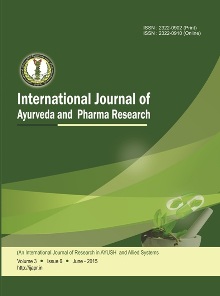A Comprehensive Analysis of Avarana in Ayurveda: Theoretical Foundations, Clinical Significance, and Therapeutic Perspectives
Abstract
In Ayurvedic literature, diseases associated with Vatha are considered particularly serious, with Avarana being identified as a crucial pathological process in their progression. In the current social scenario, where sedentary lifestyles prevail, a majority of Vatha disorders can be linked to Avarana, though the underlying mechanisms of this association remain inadequately explored. Avarana refers to the disturbed movement of Vatha, due to the obstruction or by other Doshas, Dhatus (tissues), Malas (waste products), etc. Detailed analyses of the pathogenetics of Avarana suggest that diverse pathological pathways contribute to the development of Avarana across various conditions, with clinical manifestations often dominated by the encroaching factor rather than the entrapped Vatha, albeit with certain exceptions. Diagnosis is achieved through meticulous symptom observation and iterative treatment trials. The general therapeutic approach for Avarana involves pacifying Vatha, cleansing the bodily channels, and addressing the encroaching dosha. If left untreated, Avarana can precipitate the progression to serious disease states. Redefining Samprapti through the perspective of Avarana paves the way for crafting more refined and effective treatment strategies, ultimately nurturing better patient well-being.

Copyright (c) 2025 International Journal of Ayurveda and Pharma Research

This work is licensed under a Creative Commons Attribution-NonCommercial-ShareAlike 4.0 International License.


